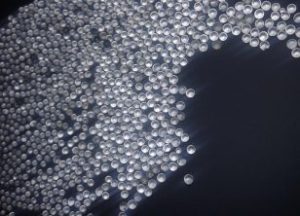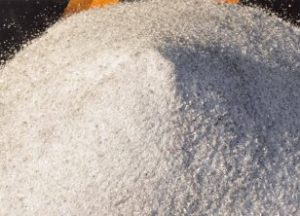

With the continuous progress of science and technology, industrial sustainable development, activated carbon in people’s production and life play a huge role, people on the quality of activated carbon requirements are getting higher and higher, such as particle uniformity, the cleanliness of powdered activated carbon , In order to enhance the quality of activated carbon, before the application, we need to be sieve different shapes, different sizes of activated carbon , thereby enhancing the use of activated carbon value and efficiency.

As the performance of glass is better than inorganic non-metallic materials, and has its own good insulation, high temperature, corrosion resistance and good characteristics, more and more applied to the various areas of the national economy. But different industries have different requirements on the glass powder, glass beads and glass fiber, such as: the size of glass powder particle is different, the length of glass fiber is not the same, the size of glass beads is different, the use is also very different, which requires vibrating sieves to grade different glass raw materials according to the use, thereby enhancing the performance of glass products.

The rubber additive refers to a rubber vulcanization accelerator. The vulcanization of rubber is mainly carried out using sulfur, but the reaction of sulfur with rubber is very slow, so vulcanization accelerators have emerged. The addition of the accelerator to the rubber compound can promote the activation of the vulcanizing agent, thereby accelerating the crosslinking reaction between the vulcanizing agent and the rubber molecule, thereby achieving the effects of shortening the vulcanization time and lowering the vulcanization temperature. The main use of vulcanization accelerators are mainly sulfenamides, thiazoles, thiurams, and some terpenoids, thioureas and dithiocarbamates. Among them, sulfenamides have the best comprehensive performance and are the most widely used.

Refractory generally refers to inorganic non-metallic materials with a refractoriness over 1580 ° C. It includes natural ores and various finished products that have been manufactured according to certain requirements. It has a certain high temperature mechanical properties, good volume stability. It is the necessary materials for all kinds of high temperature equipment .

A small amount or trace of substance added during feed production and processing and use of feed additives is seldom used in feed, but it has a significant effect. Feed additives are essential raw materials for the modern feed industry. They have obvious effect on strengthening the nutritional value of basic feed, improving animal production performance, ensuring animal health, saving feed cost and improving animal product quality.

Aluminium paste Introduction
Aluminium paste, English name: Aluminium paste Alias: aluminum paste, flash paste, silver paste. Its main components are flaky aluminum particles and petroleum solvents, was a paste. Its features are smooth aluminum surface, Concentrated particle size distribution, shape rules, with excellent light reflection and metallic luster, mixed with transparent color pigments, the film has a significant “flop” effect, the decoration is very gorgeous beautiful.

Introduction to dry adipic acid
Dry adipic acid, also known as adipic acid, is colorless and transparent crystal powder, odorless, sour. It has a stimulating effect on the eyes, skin, mucous membrane and upper respiratory tract, so the equipment must be strictly sealed when screening, so if the material is artificially fed, there will be a lot of dust, which will bring harm to the human body. Therefore, whether to consider the use of feeding station.

Plastic introduction
Plastic is a synthetic polymer, which is also commonly known as plastic or resin, and is free to change its form. The material is the monomer materials synthesis or condensation reaction polymerization, from synthetic resins and fillers, plasticizers, stabilizers, lubricants, pigments and other additives.

Introduction of polyacrylamide
Polyacrylamide (PAM) is divided into anionic polyacrylamide, cationic polyacrylamide. Amphoteric ionic polyacrylamide, non ionic polyacrylamide. It is a kind of water-soluble linear polymer which is polymerized by monomer acrylamide. The appearance of the product is white powder, soluble in water, almost insoluble in benzene, ether, ester, acetone and other general organic solvents, its aqueous solution is nearly transparent viscous liquid, is non-dangerous, non-toxic, non-corrosive, solid PAM has hygroscopicity, The hygroscopicity increases with the increase of ionic degree.